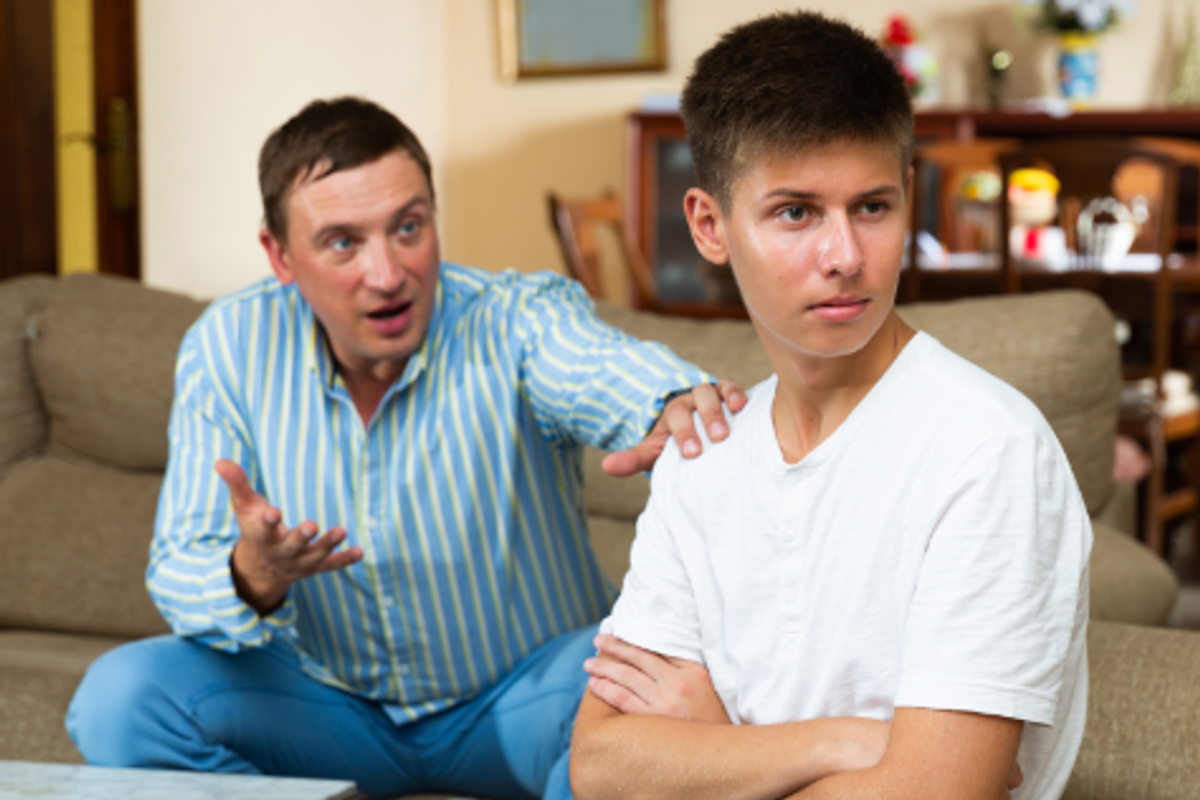Teen shares why he won't change his 'girly' name even though his parents have serious regrets
His parents want him to choose a more "professional" name before college, but he won't have it.

A teen fights with his parents to keep his name.
As parents age, they may regret the names they give their children. This is especially true as they get older and have to enter the professional world, where studies show unusual names are a hindrance. However, should they have the right to change their child’s name as a teen if their child isn’t into it?
That’s the crux of a recent viral story on Reddit’s AITA forum.
A 16-year-old boy who goes by the username 1ft2nyn shared how, for the past 6 years, his parents have been nudging him to use a different name, but he isn’t interested. “My parents started to regret my name when I was maybe 10 … [They] started sometimes calling me by my middle name and only stopping when I told them it was weird and I liked my first name. When I was 13, they asked me if I ever went by a nickname and I said no,” he wrote.
The boy’s name is Sunny, which was intentionally spelled with a u, the common girl’s spelling, instead of an o, as in the traditional boy’s spelling of “Sonny.” Sunny says his parents chose the name as a middle finger to their parents, who had insisted on having a hand in naming their previous kids.

A year ago, the parents asked Sunny if he wanted to change his name to something “more adult” to spare him the expense of changing the name on his diploma when he graduates college. But Sunny wouldn’t budge. “I was like, ‘Oh, I guess if people want that, it makes sense.’ Then I said, ‘It must suck to hate your name.’
Six months ago, Sunny’s parents said he looked a lot like a “James” and asked if he liked the name Luke. Three months ago, they tried again and presented him with 3 new name options, and he declined to make the change. “They said they feel like they named me as a big f*** you to their families but felt bad that I had such an unserious name for a man. I told them I didn't want to change my name and I always loved the way they talked about finding my name,” Sunny wrote.
It’s interesting to note that the parent's final appeal to Sunny was as much about their own feelings as his. “They said they really didn't want to live with the guilt,” Sunny wrote. “I told them how I feel about my name is more important now. They told me I should at least think of their feelings and that I should consider the future and whether I'll be taken seriously.”

So, is Sunny wrong for refusing to change his name to appease his parents and possibly make his professional life less challenging? The commenters on the post overwhelmingly supported Sunny for standing strong and keeping his name.
“Sonny or Sunny, regardless how you spell it is a perfectly normal name for a male. An identity is intertwined with a name and it's hard to separate the two. You, and you alone, are the person that should decide if you want to change your name,” Naisfurious wrote. “It sounds like your parents are more concerned about their feelings regarding your name than your feelings. that name is yours, you're your own person, and if you don't want to change your name because you like it, then don't. those are their feelings to live with, and putting them on you as a child is unfair and weird. I also have a weather name and I still love it, and i'm almost thirty. More power to you!” Anxious-Nobody-4966 added.
Because Sunny isn’t an adult, there is a slight chance that his parents could change his name without his consent. Some commenters said Sunny should take a firm stand and let his parents know there will be consequences for pushing too hard on this issue.
“Make it clear to your parents that if they were to do that there would be serious long term consequences for your relationship and that you will NEVER answer to or acknowledge that name under any circumstances and will have your name changed back the day you turn 18,” CelticMusebooks wrote. “Let them know the harder they push, the more stubborn you’ll be and if they don’t watch out, their grandson is going to be sunny jr. Whether you actually have a jr. is up to you, but it might help shut them up for now,” RezCuong added.
Ultimately, Sunny only has 2 more years left to fend off his parents and keep his name. The post he made on Reddit received over 2,000 comments from people who have his back, so it has to have given him the shot in the arm he needs to keep standing firm. This post is a great example of people pulling hard for someone to lean into positivity instead of settling for a boring name that looks good on a resume.





 In a 4-day model, kids often (but not always) receive less instructional time. Photo by
In a 4-day model, kids often (but not always) receive less instructional time. Photo by 
 Flags can be a symbol of both patriotism and nationalism.
Flags can be a symbol of both patriotism and nationalism. Love of one's country is nice. But there's a difference between patriotism and nationalism.
Love of one's country is nice. But there's a difference between patriotism and nationalism.  Mark Twain had quite a bit to say about patriotism.
Mark Twain had quite a bit to say about patriotism. 
 Retro vibes with bold colors and music! 🎶✨ #80sFashion
Retro vibes with bold colors and music! 🎶✨ #80sFashion Confused expression with a questioning gesture.
Confused expression with a questioning gesture. Students eagerly participate in a classroom discussion.
Students eagerly participate in a classroom discussion.